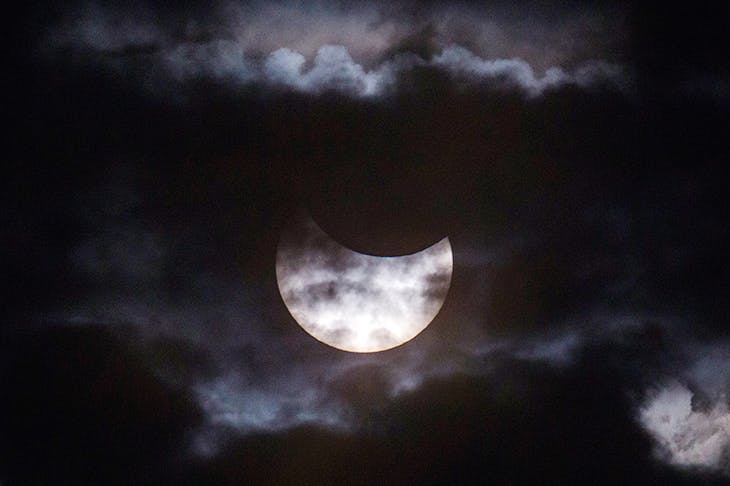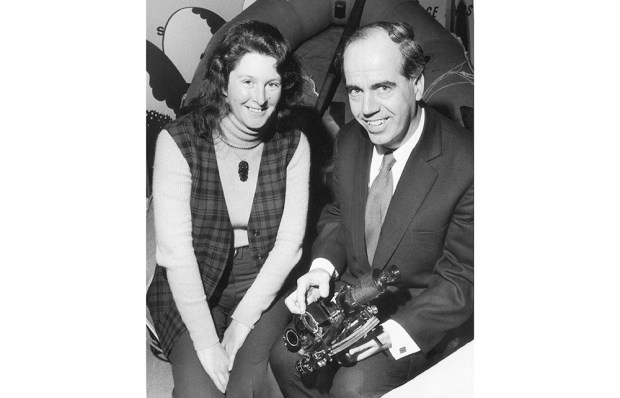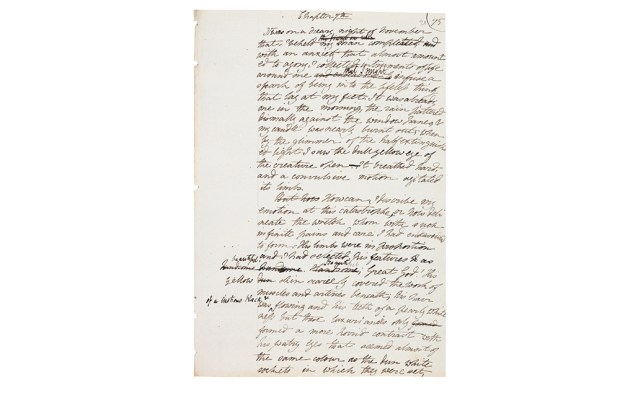Mask of the Sun: The Science, History and Forgotten Lore of Eclipsesby Norton, £20, pp. 336
On 28 May 1900 Mabel Loomis Todd, friend and editor of the poet Emily Dickinson, stood with her astronomer husband on the roof of a house in Tripoli to witness one of nature’s most spectacular events: a total eclipse of the sun. Afterwards she wrote:
I doubt if the effect of witnessing a total eclipse ever quite passes away… A startling nearness to the gigantic forces of nature and their inconceivable operation seems to have been established.
My own first experience of a total solar eclipse was also in North Africa, at a remote viewing site in the depths of the Libyan desert. As the resident astronomer on an organised eclipse tour, I had done my homework. Being familiar with the diagrams and equations of orbital mechanics, and with photographs and videos of previous eclipses, I was steeped in the predictive power of modern science.
But nothing had prepared me for the visceral sense of unease as the sunlight faded under a cloudless sky. In the final moments before totality, as the crescent sun dwindled to a sliver of light, I looked towards the horizon and saw a wall of darkness rushing towards me: the shadow of the moon travelling at more than 1,000 miles an hour. No one had told me that the sky would take on such an intense shade of indigo, or that the moon would seem like a black hole punched into the heavens. Around it the wispy halo of the sun’s outer atmosphere was the purest white imaginable, while, angling off to one side, the planets Mercury, Venus and Mars stood in a line like an astronomer’s diagram. After four long minutes, when the first dazzling beam of sunshine erupted from behind the moon’s disc, I realised with surprise that I had been crying.
If a simple alignment of astronomical bodies can move a 21st-century scientist to tears it’s perhaps not surprising that eclipses of the sun and moon have haunted the human imagination since our species first looked up at the sky. John Dvorak’s Mask of the Sun charts the history of this obsession through dozens of stories and anecdotes that illustrate how deeply embedded eclipse lore is in cultures across the world. One of the biggest surprises of Dvorak’s book is just how much time and effort ancient societies devoted to predicting when and where eclipses were likely to occur. From China to the Middle East and from Europe to Central America it seems that the darkening of the sun or moon was universally interpreted as a bad omen, but one whose baleful influence could be warded off if only its advent was known well in advance.
The basic ingredients of an eclipse are simple: a perfect alignment of the Earth, moon and sun, such that one body casts its shadow on to the other. But, due to the complex orbital dance of the Earth and moon, predicting these alignments with precision has never been entirely straightforward. Nevertheless, through meticulous programmes of observation and record keeping, basic patterns began to be discerned, particularly by the Babylonians, who by the eighth century BC had already figured out the 18-year, ten-day repetition now known as the Saros Cycle.
With the sun-centred cosmology of Copernicus, and Newton’s universal theory of gravitation, the prediction of eclipses acquired a new level of precision and, while the scientific revolution undoubtedly undermined their mystical reputation, it also found a new use for eclipses as powerful tools for probing the laws of nature. Eclipses provided crucial and convincing tests of both Newton’s gravitation and Einstein’s General Theory of Relativity; and they have allowed astronomers to study the structure and composition of the sun and moon, and to measure the gradual slowing of the Earth’s rotation due to the braking effects of ocean tides. But, as Dvorak points out, eclipses are never just about the science.
The Babylonians’ obsessive recording of eclipses has proved to be a surprisingly important resource for historians. The detailed account of an eclipse on a clay tablet discovered in Nineveh pinpoints it as having taken place on 15 June 763 BC, and this date now serves as the touchstone for relating the chronology of kings and dynasties in the ancient world to our modern calendar. Eclipses have also made their mark on military history, and Dvorak cites the classic example of the Athenian fleet during the Peloponnesian War, whose departure from Syracuse was delayed by an eclipse of the moon — with fatal consequences. A happier outcome befell T.E. Lawrence, who used the cover of a lunar eclipse to mount a successful night raid on Aqaba in 1917. Meanwhile, the ability accurately to predict eclipses can also come in handy for impressing people, as both Christopher Columbus and the Jesuit missionaries to China discovered — and this has become a standard plot device in fiction from King Solomon’s Mines to Hergé’s Adventures of Tintin.
While science may have provided an explanation of eclipses grounded in the laws of Newtonian mechanics, scientists themselves have never been immune to their more subjective qualities. Despite his own scientific background, Dvorak acknowledges the continuing emotional power that eclipses exert, suggesting that ‘when we search out eclipses we are aligning ourselves to be part of the cosmic co-incidence’ and even Edmond Halley noted ‘some sense of horror’ at the creeping onset of darkness. But it has often fallen to writers and poets to evoke the full range of emotions that an eclipse can unleash. The Austrian writer Adalbert Stifter confessed that ‘Never, ever in my entire life was I so shaken, from terror and sublimity’. In Milton’s Paradise Lost a solar eclipse brings ‘disastrous twilight’, while Virginia Woolf describes the swift transition to totality as ‘a sudden plunge, when one did not expect it’. For Annie Dillard it was as if ‘the sky snapped over the sun like a lens cover’.
Mask of the Sun is well timed: on 21 August the moon’s shadow will carve a track across the continental USA from Oregon to South Carolina, an event already being billed as ‘the Great American Eclipse’ (in the UK a partial solar eclipse will be visible the same evening, before sunset). As Dvorak makes clear, our ability to predict the precise timing and trajectory of this eclipse is the culmination of over four millennia of careful observation and study, and it is tempting to imagine what significance those early eclipse-watchers would have attached to the latest celestial drama.
We may no longer put our faith in heavenly signs and portents, but when the unearthly darkness sweeps across America this summer millions will experience the same awe and wonder that inspired our ancestors to embark on their great quest to understand the workings of the natural world. As Mabel Loomis Todd observed in 1900, in those few minutes of totality ‘hates and jealousies, and even mundane hopes, grow very small and very far away’.
Got something to add? Join the discussion and comment below.
Get 10 issues for just $10
Subscribe to The Spectator Australia today for the next 10 magazine issues, plus full online access, for just $10.
You might disagree with half of it, but you’ll enjoy reading all of it. Try your first month for free, then just $2 a week for the remainder of your first year.














Comments
Don't miss out
Join the conversation with other Spectator Australia readers. Subscribe to leave a comment.
SUBSCRIBEAlready a subscriber? Log in